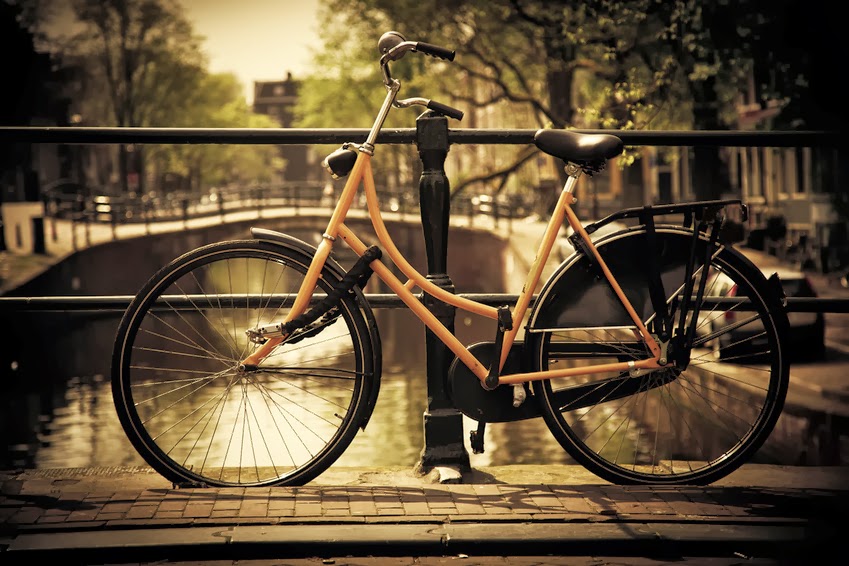Integrated Systems Europe 2014
In 2004, the first Integrated Systems Europe (ISE) trade fair was held in Geneva. Ten years have passed and this year's ISE trade fair, held February 4-6 in Amsterdam, attracted 45,000 participants from 140 countries. It is currently the fastest-growing event in the audio-video and electronic systems industry in Europe.
Amsterdam is the cradle of liberalism. The city that gave the world Spinoza and witnessed the Bed-in for Peace – an unusual protest organized by newlyweds Yoko Ono and John Lennon. The city of coffee shops and the red-light district.
Why was the first stock exchange established here? Why did this particular city attract Descartes and become an exporter of philosophy based on individual freedom?
As American author Russell Shorto explains in his book Amsterdam: A History of the World's Most Liberal City, this has its roots in economics and a particular approach to land ownership. It all began in the Middle Ages – while the rest of Europe was under the feudal system, here in Holland people began to reclaim land from the sea, regulate rivers, build dams and canals. People thus became owners of newly acquired patches of land. The famous saying goes that "God created the World and the Dutch created Holland." This process made people realize that their possibilities were unlimited, made them aware of how important innovation is, that changes can be made and events can be shaped. When people understood that they could influence their environment, that they could earn money and change their lives, nothing could stop them from such crazy ideas as developing maritime trade with the most distant lands. The Dutch East India Company was established – the first corporation and publicly traded company in history.
As Jan van den Ende, professor of innovation and technology at Erasmus University in Rotterdam, states, innovation in business is nothing new. "Henry Ford achieved success through creativity and innovation – he didn't invent the car or the production line, but by combining these two things he created a product accessible to a wide group of consumers." The professor makes it clear: "If you want to succeed in any business, you must be an innovator. If you're not – failure awaits you." The story of Kodak, which went bankrupt in 2012, can serve as an example. Few people know that Kodak's R&D department created a digital camera project as early as 1975. The company's management was unable to notice and appreciate this innovation and insisted on the traditional business model – producing photographic film. Another, this time positive example could be BIC – for years it thought of itself as operating in the business of "we produce things for writing" and struggled to increase sales in this segment. Finally, someone noticed that they could try to start producing other disposable items. Production of razors and lighters doubled their business.
What can stimulate creativity? Much depends on organizational culture. In strong companies, lack of success is not perceived as failure and experimentation is welcome. Both success and failure should be rewarded, as both paths bring us closer to something new. What should be punished is lack of action. However, creativity cannot be an end in itself. Creativity is just a tool.
I've strayed a bit from the topic of the Integrated Systems Europe trade fair in Amsterdam. Let's get back to it.
ISE 2014 consisted of twelve exhibition halls filled with exhibitors, each presenting their latest achievements. Companies from Europe, USA, Asia.
For us, the most interesting part of the fair were those halls where companies offering digital signage solutions exhibited: LED screens, LCD displays, projectors, content management software. Outdoor advertising is undergoing digitization, just like other media. This isn't visible in Poland yet, but it's coming in the next few years.
In the near future, billboards will be LED screens. For now, the price barrier is still slowing down this digital revolution, but equipment is getting cheaper and there will be fewer and fewer places for advertising media, along with tightening regulations on protecting public space and landscape. An electronic billboard will accommodate messages from 6 to 8 advertisers and provide full control over what and when we want to show.
At the ISE fair, you can see a growing group of exhibitors from China. Every year, the quality level of the solutions and service they offer improves. For now, European and American companies are winning with their approach to customers, comprehensive service, attention to relationships and quality. The Chinese sell in a "Neanderthal" way – I have a product and I want to sell it to you. However, they learn quickly – some already have offices in Europe, employ experienced local managers, offer technical support. In a few years, competition with them will be even more difficult.
There were many novelties – LED screens in 4K and 5K technology with stunning 1.5mm pixel pitch resolution. In LCD technology – screens intended for building interiors, for now, companies from Korea and Japan dominate: Samsung, LG, NEC.
From what I know, Andrzej Maszewski is preparing a more detailed post about technical novelties and products presented at the ISE fair. So I'll end here and encourage you to visit Amsterdam – for business or tourism – the choice is yours!

